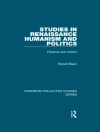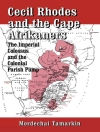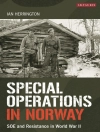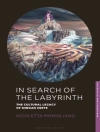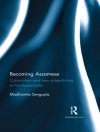How we define border studies is transforming from focussing on “a line in the sand” to the more complex notions of how constituting a border is practiced, sustained and modified. In the expansion of borders studies, the areas explored across Europe and Asia have been numerous, but the specific themes that arise through comparative case studies are novel when approach Europe and Asian borderlands. Comparing the border experiences in East Asia and Europe in a number of thematic clusters ranging from economics, tourism, and food production to ethnicity, migration and conquest, Borders in East and West aims to decenter border studies from its current focus on the Americas and Europe.
Jadual kandungan
List of Illustrations
Preface
Nobuya Hashimoto
Introduction: Border Experiences in East Asia and Europe – some Theoretical and Conceptual Thoughts
Stefan Berger
Section 1: Economic Borders in the Chinese and Habsburg Empires during the 18th and 19th Centuries
Andrea Komlosy and Kwangmin Kim
Chapter 1. Xinjiang and the Peripheral Pattern of Economic Development in Qing China
Kwangmin Kim
Chapter 2. Habsburg Borderlands: A Comparative Perspective
Andrea Komlosy
Section 2: Tourism and Borderlands
Shizue Osa and Małgorzata Głowacka-Grajper
Chapter 3. Travelling Jokoshi-Students: Construction of the “Imperial Gaze” through Colonial Tourism during War
Shizue Osa
Chapter 4. Borderlands Tourism as a Memory Practice. A Case Study of the ‘Kresy’ (The Former Polish Eastern Borderlands)
Małgorzata Głowacka-Grajper
Section 3: Borders and Migration: A Comparison Between Water and Land
Nobuya Hashimoto
Chapter 5. Crossing the Water Border: Migrations and the Japanese Imperial Seaway Between Taiwan and the Yaeyama Islands
Hiroko Matsuda
Chapter 6. Border Town and Migration: The Case of Narva and Russian Speakers in Estonia
Nobuya Hashimoto and Hiromi Komori
Section 4: Borders and Food Classification
Loretta Kim and Ilaria Porciani
Chapter 7. The Way We Eat: Evolving Taxonomies of Non-Han Food Customs in Northeastern China
Loretta Kim
Chapter 8. Imagined Communities and Communities of Practice: Participation, Territory and the Making of Food Heritage in Istria
Ilaria Porciani
Section 5: Gazing and Defining People in the Borderland
Takahiro Yamamoto and Takehiro Okabe
Chapter 9. The Japanese gaze and the memory of the Kuril Ainu
Takahiro Yamamoto
Chapter 10. From Finnic to Soviet Family: Finnic Kinship and Border in the Soviet–Finnish Controversy over the Kalevala from the mid-19th Century to the 1940s
Takehiro Okabe
Section 6: Migration and Inter-Ethnic Conflict at China’s Edge
Seonmin Kim and Balázs Szalontai
Chapter 11. Environmental Relations in the Yalu River Region in the Nineteenth Century
Seonmin Kim
Chapter 12. Smallfolk in a Clash of Empires: Sino-Mongolian Relations and the Ethnic Chinese Community in the Tsedenbal Era, 1960–1984
Balázs Szalontai
Section 7: Geopolitical Rivalries in Russia’s Far North and Far East
Elena I. Campbell and Zhao Xin
Chapter 13. Russian’s Expansions towards the Amur River and Westerners’ Corresponding Explorations in Early Modern Times
Zhao Xin
Chapter 14. “The Land of Bounty:” Constructing the Russian North as Treasure
Elena I. Campbell
Chapter 15. The Horizon of Border Studies: U.S. Military Bases as a Network of Exclaves
Shinji Kawana, Keisuke Mori and Minori Takahashi
Mengenai Pengarang
Nobuya Hashimoto is Professor of Russian and Baltic History at Kwansei Gakuin University in Japan. His fields of interest are socio-cultural history of education in Russian Empire, Baltic area studies, and history and memory politics in Russia and Central and East European countries.


